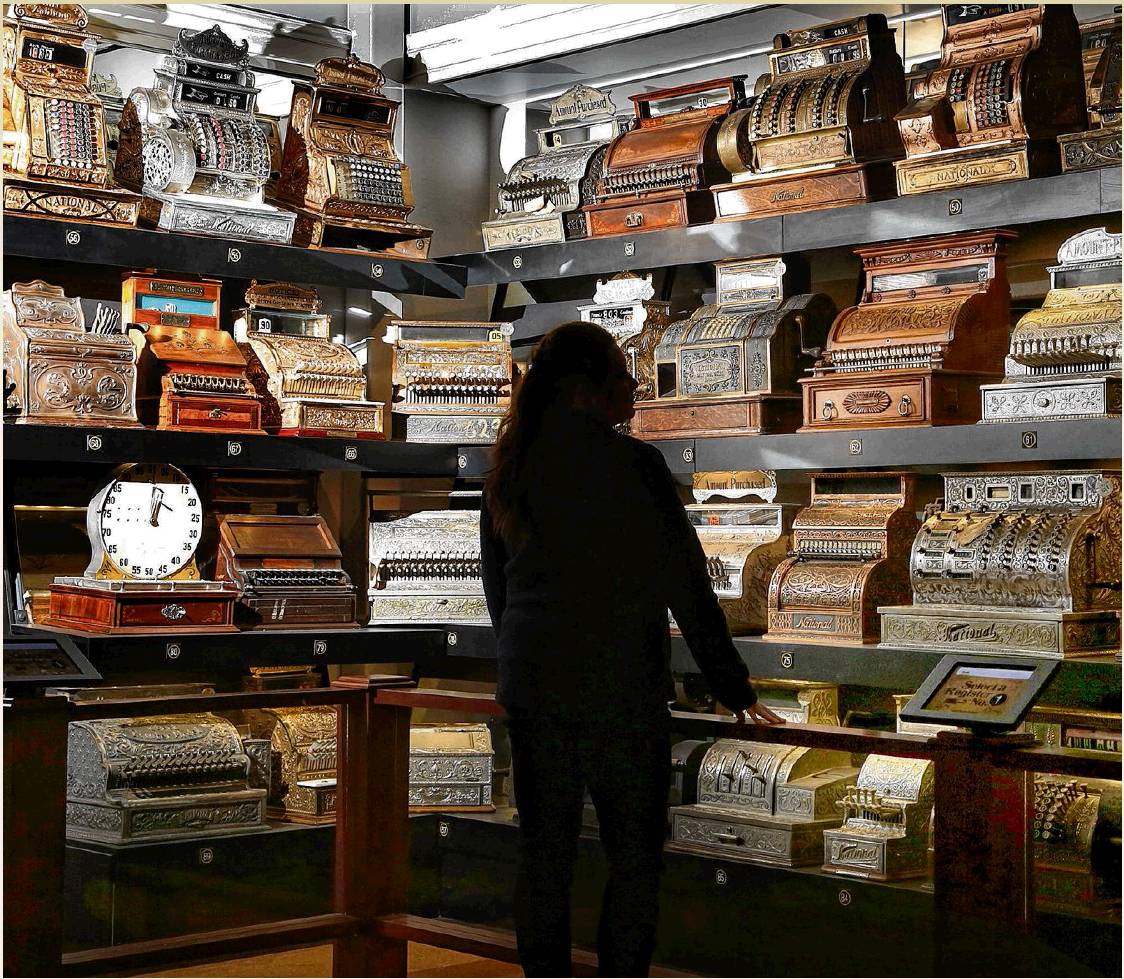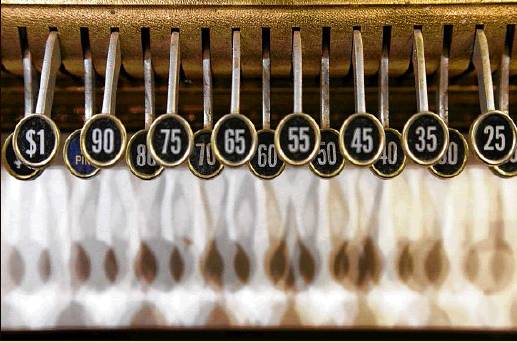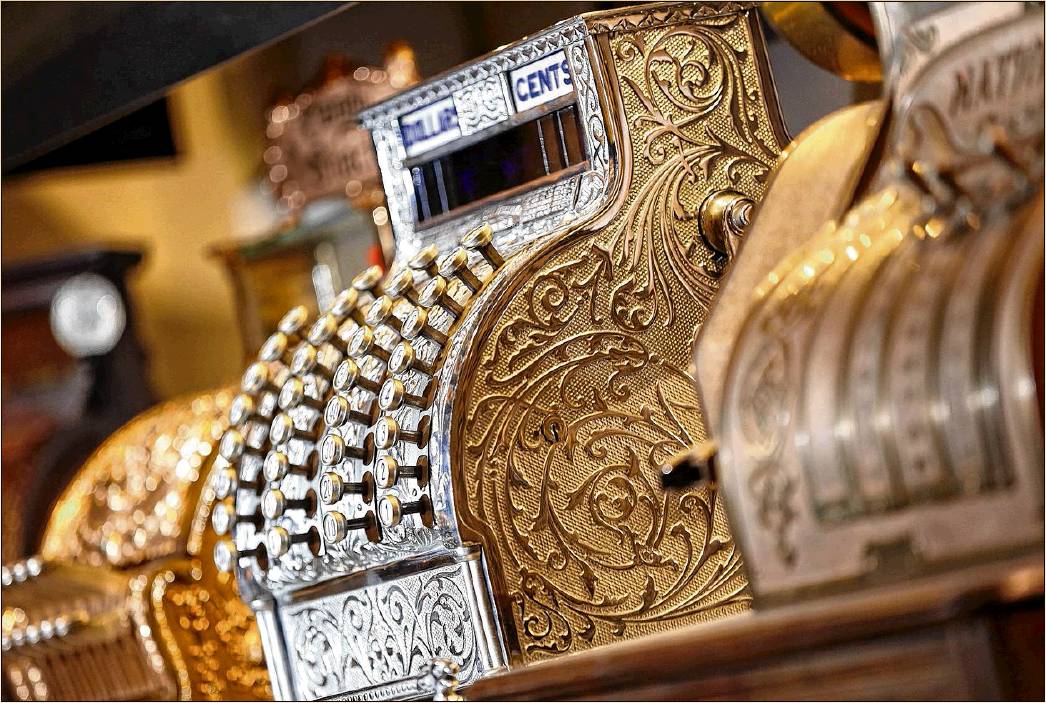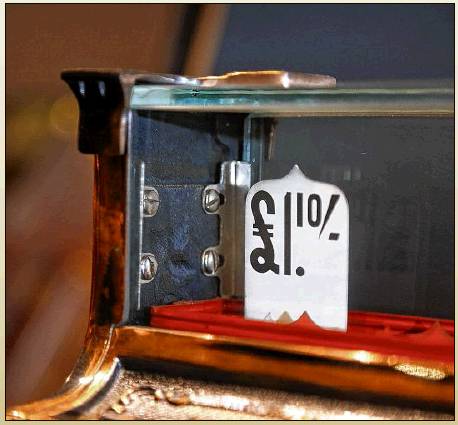When the cash register was king
As a reflection of their businesses, merchants were willing to pay for elaborate machines.
Lisa Powell
Staff Writer
The cash registers manufactured by Dayton’s National Cash Register Company were not just tools of business — they were also objects of art.
Lined up at Carillon Historical Park in gleaming order, the machines, made of warm woods and glittering metals, shimmer in a marriage of artistry and commerce.
“It’s like a jewelry store,” said Alex Heckman, director of education and museum operations at Carillon Historical Park. “That was our intent when we were laying it out. We wanted it to look like a jewelry store.”
Most likely James Ritty, the owner of Dayton’s Pony House saloon, never imagined a jewelry store when he and his brother John patented the Ritty Dial in 1879 to combat employees pocketing his profits.
A reproduction of the Ritty Dial, with a round clock-like face, is included in the display. A later model of the invention would be dubbed “Ritty’s Incorruptible Cashier.”
There are close to 200 cash registers on display at Carillon Historical Park. Last year the NCR Corp. donated the NCR Archive to Dayton History, which owns and operates the park. NCR’s gift included hundreds of 20th century cash registers and business machines along with other images and artifacts.
In 1884, John H. Patterson and his brother Frank J. Patterson spent $6,500 to purchase a controlling interest in the National Manufacturing Company that was making and selling cash registers, according to Dayton History. Two days later they changed the name to the National Cash Register Company.
Between 1908 and 1918, National Cash Register manufactured more than 1 million machines. In the 1920s it built a million more.
Stunning craftsmanship is on display at the museum. Intricately scrolled metal cabinets in brass, bronze and nickel shine brightly. Inlaid wood glows in shades of chestnut and ebony and oval buttons cast shadows across white marble.
Ornate artistry worthy of museums was part of design during the period. An example is the 79 Principle, Model 10 cash register made in 1892. The aluminum cabinet is embellished with coiling scroll work that twists throughout the buttons and along the sides.
“There are two big reasons they look like works of art,” Heckman said. “You have to think about the context of America at the time. A lot of cars looked like works of art, clothing had many more layers and much more detail and bicycles looked fancier and so much more ornate than they do now.
“The other piece of it is the cash register was such a big investment on the part of the shop owner who had to be convinced of making the investment in this new-fangled technology.”
The machines on display are a reminder that early on, NCR manufactured on a global platform making cash registers that rang up British pounds, French francs and German marks.
Many of the cash registers were customized for businesses and outfitted with nameplates like “C.A. Robertson” and “Candy Shack.”
“It was a big investment — several hundred dollars — to buy one of these large cash registers,” said Heckman. “They wanted them to look permanent, deliberate and part of the infrastructure of the store.”
Contact this reporter at 937-225-2229 or email Lisa.Powell@coxinc.
com.
Stunning craftsmanship is on display at the museum. Intricately scrolled metal cabinets in brass, bronze and nickel shine brightly.






